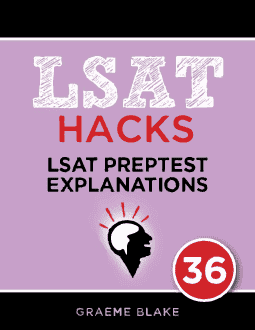QUESTION TEXT: It is clear that humans during the…
QUESTION TYPE: Paradox – Exception
PARADOX: Most lamps in the early Paleolithic occurred when the Magdalenian culture was dominant.
ANALYSIS: The correct answer talks about different kinds of lamps. But having many different types of something doesn’t mean you will have more of something overall.
Imagine having 300 types of lamps, but only 1-2 examples of each type. A culture that only had 1-2 types of lamps would have more lamps if they had 5,000 lamps of each type.
The wrong answers help us explain why more lamps from the Magdalenian period were found, or why more Magdalenian lamps were produced.
___________
- This shows that we are better at identifying the lamps from the later Magdalenian period. There may have been as many lamps in the early period but we haven’t figured out that they are lamps.
- This would explain why we have found so many Magdalenian lamps. We’ve found more Magdalenian stuff, period.
- This shows that it was easier for the Magdalenians to make lamps. So they made more.
- If you had a fire pit, then you didn’t need a lamp for light inside your cave: you had a fire, instead. (The Magdalenians came later, not earlier.)
- CORRECT. More kinds of lamps does not equal more lamps, total.

Free Logical Reasoning lesson
Get a free sample of the Logical Reasoning Mastery Seminar. Learn tips for solving LR questions


Hey, I’m unclear as to why B is incorrect. The question asks which explanation does not contribute to the explanation that “the
distribution of known lamps from the period is skewed” towards the late Upper Paleolithic. As I see it, B (“More archaeological sites have been discovered from the Magdalenian culture than from earlier cultures”) does not contribute to the skewing of distribution, if by distribution they mean “lamps per site.” What if we have found two sites from the early UP and ten from the late UP, but all have three lamps each? The quantity of discovered sites from the late UP, in this hypothetical, does not impact the distribution of lamps, no? Therefore B doesn’t contribute to an explanation of any skwewed distribution.
Hi Nick,
The issue here is the definition of distribution. When this question uses distribution, it means distribution across time, not across an area or as an average of lamps per site. The stimulus is saying that more lamps are distributed in the later part of the Upper Paleolithic and fewer are distributed earlier.
I hope this helps!
I am still grappling with the distinctions between answers C and E.
Both COULD be a part of a valid explanation for the increase in lamps in the later UP period. However, both could be considered illogical assumptions. Moreover, these leaps in reasoning strike me as remarkably parallel.
C – Yes, more efficient lamp making techniques could lead to more lamp production in that this would make it easier to produce more lamps if necessary.
Simply because the lamp making process is more efficient, this does not mean that humans would necessarily produce more lamps. Perhaps, they already produced a sufficient amount of lamps and developed more efficient techniques in order to spend less time producing the same amount of lamps rather than to produce more lamps.
E – Yes, creating more kinds of lamps could mean that they produced more lamps because they found new ways to utilize the new diversity of lamps in new environments while continuing to use the same number of lamps in the traditional manner.
Simply because there is a larger variety of lamps, that does not mean that they created more lamps. Perhaps, some of the traditional lamps were simply replaced by a new kind.
I would greatly appreciate if someone can further clarify why the assumption necessary for C is preferable to the assumption necessary for E. Thanks!
You’re splitting hairs with C. We *know* they had more lamps. More efficient production techniques a plausible explanation for that fact. You invented a scenario that isn’t supported by the question.
I don’t think they are splitting hairs at all – efficiency in no way NECESSARILY suggests wholesale proliferation or more ubiquitous production and use.
For example, if a future culture comes up with a more “efficient” way in which to make solar panels (for solar power), this does not necessarily provide a plausible explanation for the existence of *more* future solar panels. UNLESS we assume that this *efficiency* comported itself and existed in such a way that made more production possible. It’s a huge glaring assumption you need to make for C to make an iota of sense. It only *contributes* a plausible explanation if you concede to the presupposition that efficiency somehow equals higher capacity for production.